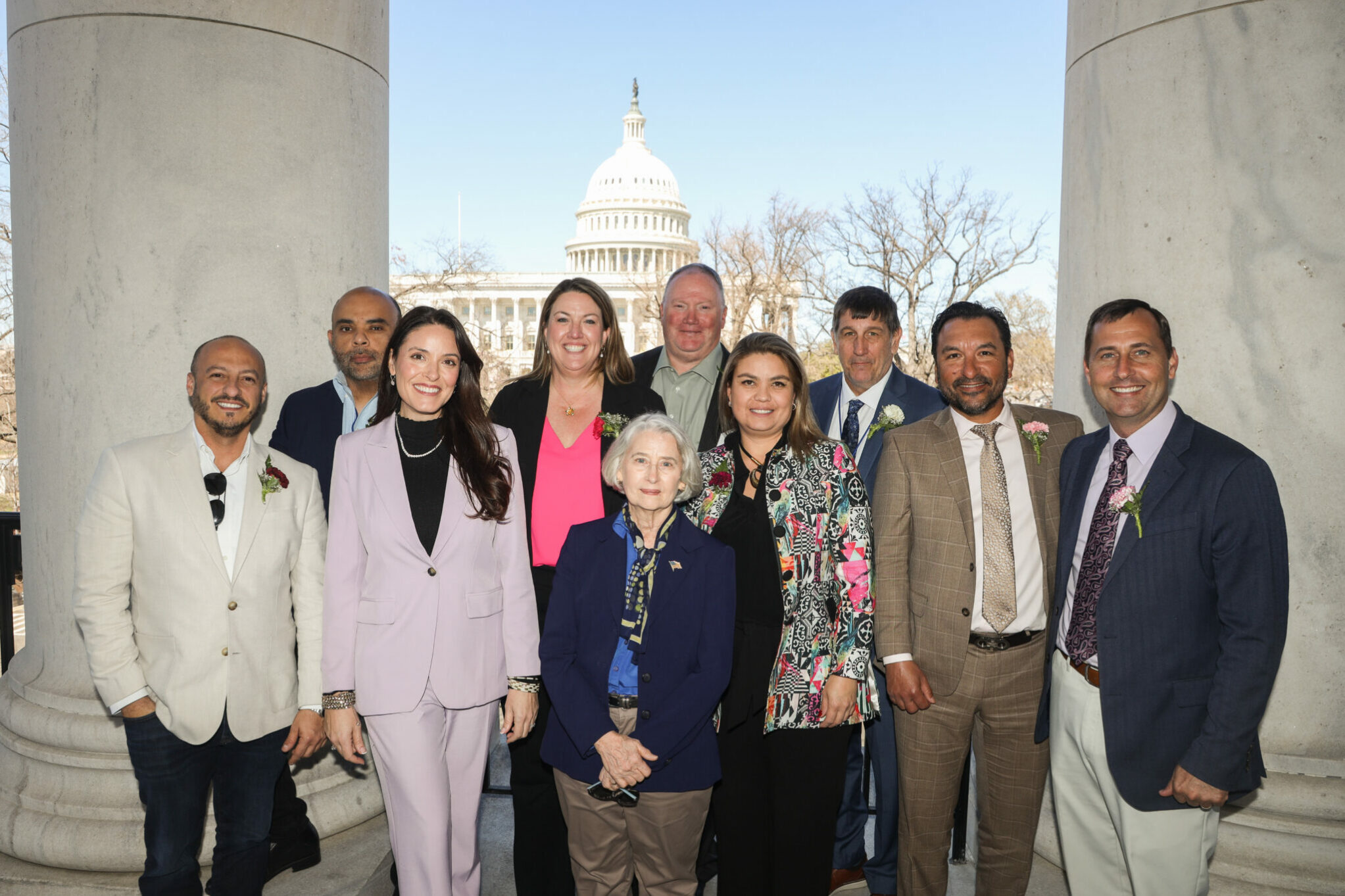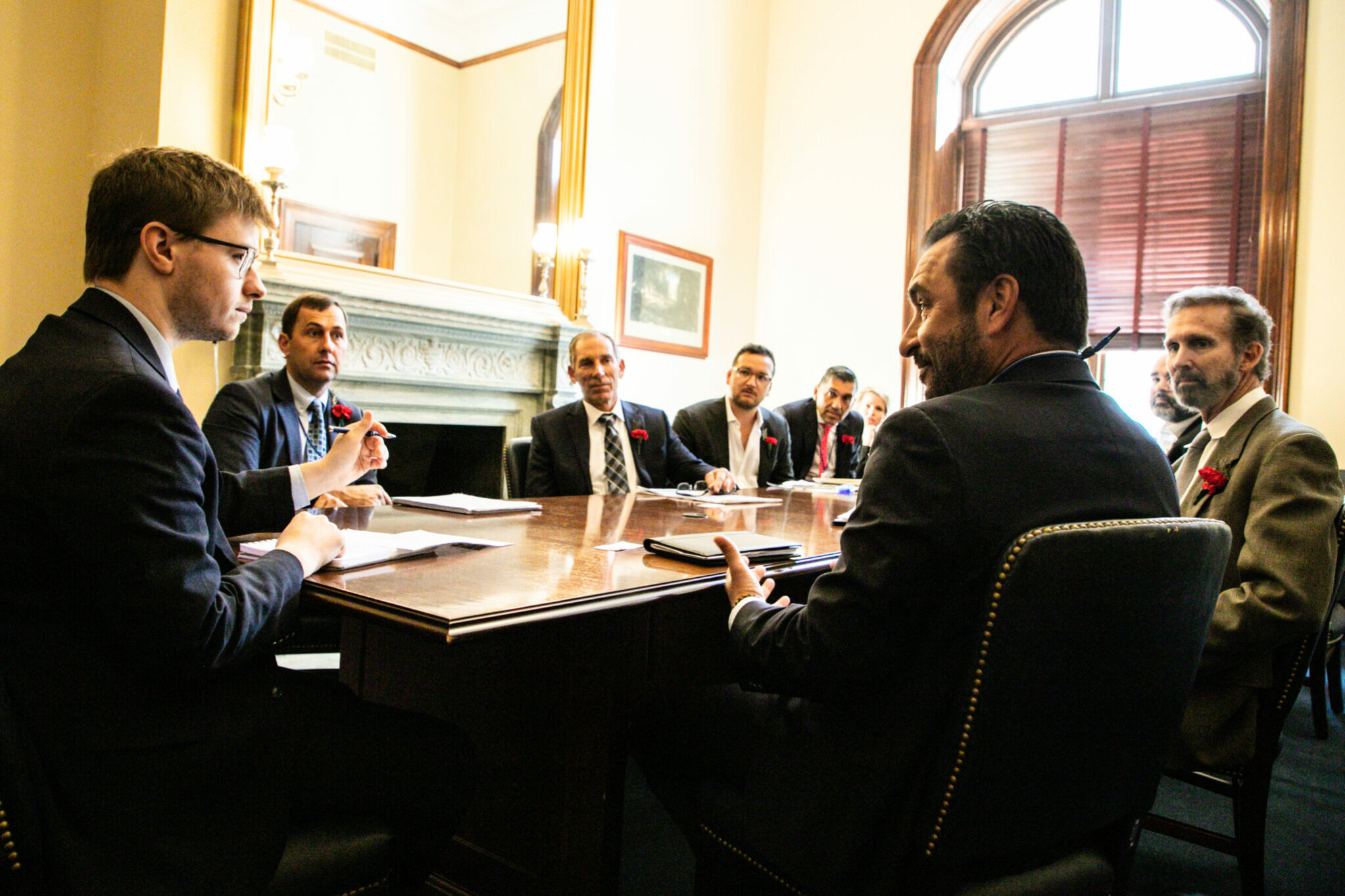 When Congress passed a 2,000 plus-page bill in December to fund the federal government through the final nine months of fiscal year 2016, it was a refreshing feat of bipartisan cooperation that some thought could signal a comeback of collaboration in Washington.
When Congress passed a 2,000 plus-page bill in December to fund the federal government through the final nine months of fiscal year 2016, it was a refreshing feat of bipartisan cooperation that some thought could signal a comeback of collaboration in Washington.
Not so fast, said Shawn McBurney, senior director of government relations for the Society of American Florists.
“Presidential election years have a way of intervening, and generally, the dynamics of election politics block lawmakers from agreeing on much of anything,” he explained. “This year will likely be no different.”
This week, McBurney offered his take on what’s in store in 2016 on issues important to the floral industry. READ MORE

Photograph of a U.S. Department of Homeland Security logo.
Immigration Reform
Where things stand: “Immigration reform has become almost radioactive,” McBurney said.“ In the wake of terrorist attacks in Paris and San Bernardino, California, the debate is now being driven by national security. Further intensifying the issue is President Obama’s plan to admit more Syrian refugees, something governors in 31 states across the country oppose.”
The Administration has announced the launch of an operation to deport hundreds of Central American families who have crossed the U.S. southern border illegally since the start of 2015, and who have been ordered deported by a U.S. judge. Despite this action, anti-immigration forces continue to call for “border security first” before considering immigration reform. And just before the New Year’s holiday, President Obama issued an executive action that would grant work permits to certain foreign workers on temporary work visas and extend the visas for H-1B workers. Those unilateral actions in the face of congressional opposition have also polarized the debate.
Action in the next 12 months: “It is a virtual certainty that no legislation will be passed by Congress anytime soon to allow additional workers into the country or to address the issue of workers in the country who are currently undocumented,” McBurney said. Despite that certainty, immigration reform remains an important issue for the floral industry and one that SAF will continue to work on in 2016.

Tax Reform
Where things stand: “Hopes for action on tax reform are slim,” McBurney said Where things stand: The “Protecting Americans from Tax Hikes Act” (PATH Act) was passed as part of the budget deal in December. Although the $680 billion tax package addressed dozens of tax issues, including making Section 179 expensing deductions permanent, thus allowing small businesses in the floral industry to deduct up to $500,000 a year for office equipment and machinery, it’s likely to be the only real tax legislation that becomes law between now and the November elections.
While Republicans and Democrats agree that the top corporate tax rate of 35 percent should be cut in light of foreign competition, they disagree on the scope of the reductions. For example, House Ways and Means Chairman Kevin Brady (R-Texas) wants a corporate rate close to 20 percent in tandem with a similar individual threshold for small business owners. President Obama aims for 28 percent and a tight focus on corporations.
Action in the next 12 months: House Speaker Paul Ryan (R-Wis.) wants to reduce the tax code down to two rates. “The only way to fix our broken tax code is to simplify, simplify, simplify,” Ryan said in a speech in December.
Meanwhile, according to McBurney, Democrats are intent on preserving the basic family tax structure which includes higher rates for “wealthy” families and providing tax cuts to the “middle-class.”
“Since it is a presidential election year, each side wants to draw a sharp line, but they also must avoid conflict with their own presidential candidates,” he said.“That is a recipe for inaction.”
Appropriations Process
Where things stand: One possible area of hope in 2016 lies in the apparent revival of order in the appropriations process. Congress must pass, and the president must sign (or have his veto overridden) twelve appropriations bills that each fund different parts of the government.
“For the last several years, Congress had been unable to pass those measures under ‘regular order,’ defined as those rules, precedents and customs of Congress that constitute an orderly and deliberative policymaking process,” McBurney explained. “Instead, Congress passed short-term continuing resolutions (CRs) that temporarily funded the government at existing levels.”
In some past instances, a standoff occurred without a CR which resulted in government shutdowns with ‘non-essential’ functions ceasing until funding was approved again.“That type of political brinksmanship had prevailed so long in Washington that it was almost seen as normal,” McBurney said.
Action in the next 12 months: With the enactment of the budget deal in December, there is a possibility that Congress can return to regular order by deliberating and passing individual spending measures. If so, it provides an opportunity to include policy riders designed to move legislation forward.
“Once again though, this year all legislative activity will take place within the context of the presidential election which means that any disagreements will be heightened and the appropriations process may once again devolve into inertia,” McBurney said.
Regulations
Where things stand: The battles continue on the regulatory side, with Congress and the Environmental Protection Agency (EPA) at loggerheads over several EPA proposals. “The ‘Waters of the U.S.’ rule, which many, including agriculture, think would greatly, and unlawfully, extend EPA’s jurisdiction under the Clean Water Act, is currently being litigated,” McBurney said . “ In the meantime, several attempts to pass legislation blocking EPA’s implementation of the rule have failed.”
EPA has also announced plans to remove certain agricultural chemicals from use, bypassing the agency’s own review procedures, leading to further controversy. In an unusual move, EPA recently rejected an appeal from agricultural users, including the Minor Crop Farmer Alliance (MCFA) of which SAF is a member, to extend the public comment period on the review of one chemical used in the industry.
“The battles will continue over whether or not the perceived impact of neonicotinoids on pollinators is justified by scientific evidence,” he said.
Action in the next 12 months: On the brighter side, the USDA’s research programs, under the Farm Bill and with the Floriculture & Nursery Research Initiative (FNRI) continue to thrive, with industry members’ voices continuing to make a difference.
Hungry to be part of the action? Tired of watching from the sideline? Make plans now to take an active role in policy making during SAF’s Congressional Action Days, March 14 and 15, 2016, in Washington, D.C. Register today — and bring a co-worker for free.





